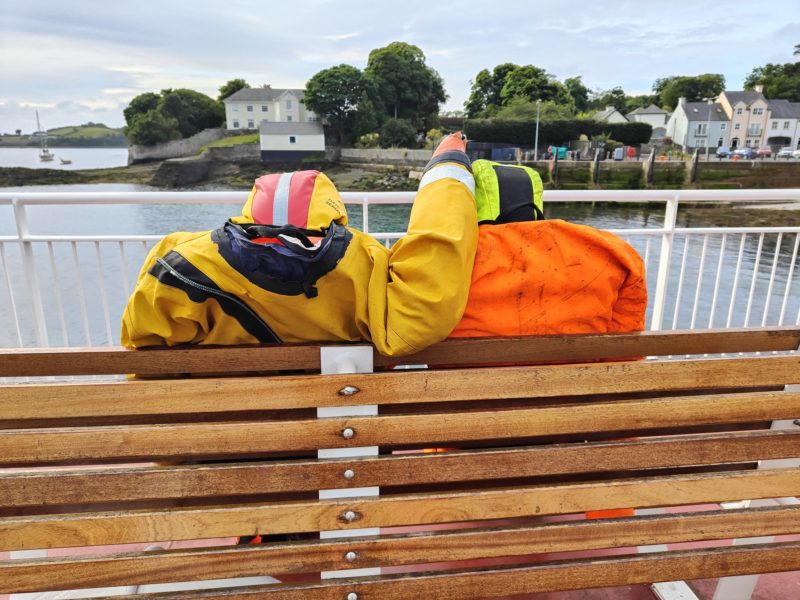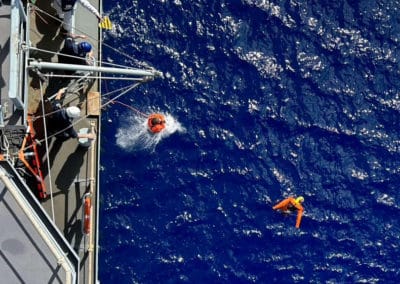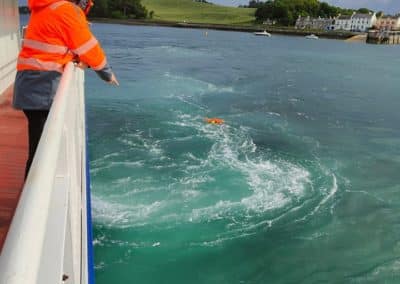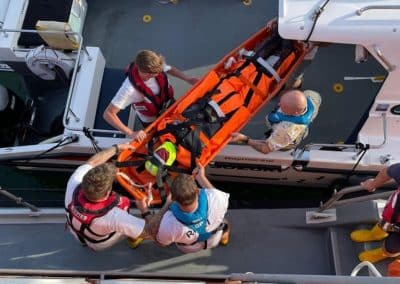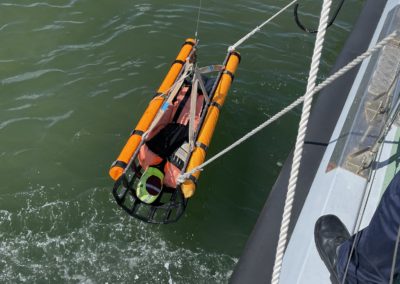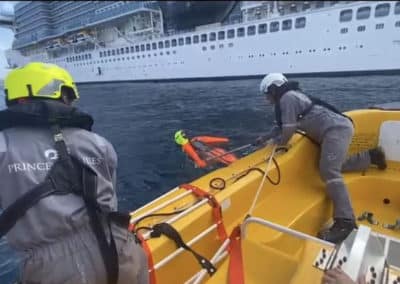Enhancing Ferry Operator Safety: The Role of Manikins in Maritime Training
Safety is paramount in maritime operations, particularly for ferry operators who transport hundreds of passengers daily, often including children and infants.
Recent incidents, such as the grounding of the roll-on/roll-off ferry Alfred near Swona Island, have emphasized the importance of rigorous and comprehensive training for ferry crews. One critical takeaway from the Maritime Accident Investigation Branch (MAIB) report is the need for enhanced crew preparedness, especially when handling man-overboard (MOB) emergencies and properly fitting lifejackets, including those for infants.
Read the full report here https://assets.publishing.service.gov.uk/media/664b1f67f34f9b5a56adca72/2024-3-Alfred-Report.pdf
The Unique Challenges of Ferry Operations
Ferry operators face distinct challenges in ensuring the safety of diverse groups of passengers. Ferries often carry a mix of adults, children, and infants, requiring the crew to be versatile and prepared for all types of emergencies. While most ferry operators conduct safety drills, recent events highlight the gaps that can arise when training is insufficiently detailed or lacks realism.
One notable observation from the MAIB report on the Alfred incident was the difficulty crew members had in correctly fitting lifejackets for infants. In emergencies, the ability to respond quickly and confidently to such challenges can be the difference between a successful rescue and a tragedy. This is where realistic and consistent training becomes crucial.
The Power of Realistic Training with Manikins
Training manikins provide ferry operators with an effective way to simulate real-world emergencies without putting lives at risk. These life-sized figures are designed to mimic the weight and feel of human bodies, allowing crew members to practice rescues in a safe but highly realistic environment.
For ferry operators, manikins offer several specific advantages:
- Enhanced MOB Training: Man-overboard scenarios are one of the most critical emergencies in maritime operations. Manikins allow ferry crews to practice MOB drills that simulate various real-life conditions. From retrieving a manikin from the water using lifeboats or rescue equipment to practising first aid after recovery, these drills help build confidence and muscle memory. This ensures that in a real MOB situation, crew members can act swiftly and effectively.
- Training for Infant and Child Safety: One of the key recommendations from the Alfred incident was the need to better prepare ferry crews to assist infants and young children. Using child- and infant-sized manikins allows crews to practice the specific actions needed to fit lifejackets and perform rescues involving the youngest and most vulnerable passengers. Integrating this training ensures that the crew is not only proficient in assisting adults but is also fully capable of responding to the needs of children in distress.
- Simulation of Various Emergency Scenarios: Manikins come in different sizes and weights, allowing ferry operators to run drills that simulate a variety of emergency scenarios. Whether it’s a fire on board, a medical emergency, or a MOB situation, the versatility of these tools ensures that crews are well-prepared for any possible event. This realistic practice helps crews develop the skills they need to remain calm and focused during real emergencies.
Building Confidence and Competence in Emergency Response
Ferry operators must ensure that their crew members are fully confident in their ability to manage emergencies. Training with manikins not only improves technical skills but also enhances decision-making under pressure. Realistic drills that involve life-sized manikins encourage crews to think critically and adapt to changing circumstances, which is essential in the chaotic environment of an actual emergency.
Additionally, regular training that incorporates the use of manikins strengthens teamwork. Emergency response on a ferry requires clear communication and coordination between crew members. By conducting drills that involve the use of manikins, ferry operators can ensure that all crew members are on the same page, working together seamlessly when an emergency arises.
Conclusion: Investing in Realistic Training Saves Lives
For ferry operators, the safety of passengers is non-negotiable. While safety procedures and equipment are essential, the most crucial factor in preventing tragedy is a well-prepared crew.
Training with manikins allows ferry operators to provide their crews with hands-on, realistic practice in a range of emergency scenarios, from MOB drills to lifejacket fitting for children and infants. By investing in regular, comprehensive safety training that includes the use of manikins, ferry operators can significantly enhance the safety of their operations and ensure that their crew is ready for any challenge.
For those looking to elevate their safety training, Ruth Lee Ltd offers a variety of MOB manikins designed for ferry operators, including models tailored for infant and child safety. Incorporating these tools into your training regimen is a proactive step toward ensuring that everyone on board, especially the youngest passengers, is protected during any emergency.
